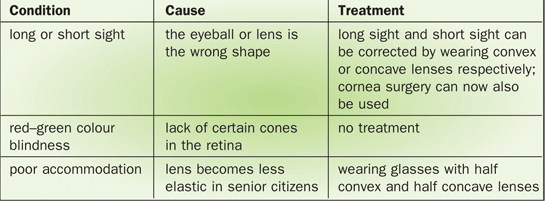Response to Stimuli
Patterns of response
All living organisms need to respond to changes in the environment. Although this happens in different ways the pattern of events is always the same:
stimulus > detection > co-ordination > response
Plants can also respond to stimuli but the response is usually slower than that of animals.
Detecting the stimulus
Receptors are specialised cells that detect a stimulus. Their job is to convert the stimulus into electrical signals in nerve cells.
Some receptors can detect several different stimuli but they are usually specialised to detect one type of stimulus:
- light - photoreceptors in the eye
- sound - vibration receptors in the ears
- touch, pressure, pain and temperature - different receptors in the skin
- taste and smell - chemical receptors in the tongue and nose
- position of the body - receptors in the ears
A sense organ is a group of receptors gathered together with some other structures.The other structures help the receptors to work more efficiently. An example of this is the eye.

Some people have problems with their eyes.

The eyes are also used to judge distances. Animals that hunt usually have their eyes on the front of their head. Each eye has a slightly different image of the object. This is called binocular vision and it can be used to judge distance. Animals that are hunted usually have eyes on the side of their heads. This gives monocular vision and they cannot judge distances so well. They can, however, see almost all around.
This video explains how the eye works
Co-ordination
The body receives information from many different receptors at the same time.
Co-ordination involves processing all the information from receptors so that the body can produce a response that will benefit the whole organism.
In most animals this job is done by the central nervous system (CNS).
Response
Effectors are organs in the body that bring about a response to the stimulus.
Usually these effectors are muscles and they respond by contracting. They could however be glands and they may respond by releasing an enzyme. Many
responses are reflexes.
